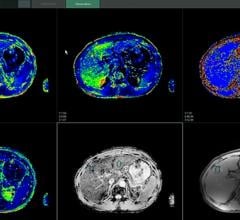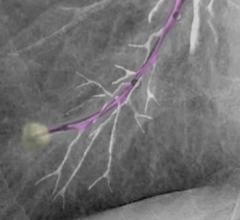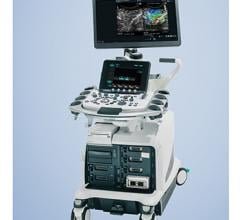
OmniVision's OVM6948 CameraCubeChip, a fully packaged, wafer-level camera module measuring 0.65mm x 0.65mm x 1.158mm, built on OmniVision's OV6948, winner of the Guinness World Record for “The Smallest Image Sensor Commercially Available.”
October 22, 2019 — OmniVision Technologies Inc. announced that its OV6948 camera module is the winner of the Guinness World Record for “The Smallest Image Sensor Commercially Available,” at a size of 0.575 mm x 0.575 mm. The announcement was made as part of the 2019 Medical Design and Manufacturing (MD&M) technology show, Oct. 23-24 in Minneapolis. Derived from this ultra-small imager, the company also announced its OVM6948 CameraCubeChip, a fully packaged, wafer-level camera module measuring 0.65mm x 0.65mm, with a z-height of 1.158mm.
OmniVision developed these medical imagers to address the market demand for decreased invasiveness and deeper anatomical access. Additionally, these imagers can address the many challenges posed by reusable medical imaging equipment, including cross-contamination risks and inefficiencies due to high maintenance costs.
"At Yole Développement (Yole), we expect disposable endoscope shipments to grow at a 35.9 percent CAGR [compound annual growth rate] over the next five years [1]," asserted Marjorie Villien, Ph.D., technology and market analyst, medical and industrial imaging. "This industry is today driven by the recent recommendation from the U.S. Food and Drug Administration (FDA) related to the cross-contamination issues due to improper cleaning of the endoscopes. In this context, all major endoscope OEMs are developing cost-effective, small-diameter disposable endoscopes with high image quality."
Utilizing an effective and economical wafer-level packaging technology, the OVM6948 is making the mass production of disposable medical imaging equipment possible. Additionally, this complete module can be integrated into a catheter or endoscope with a diameter as small as 1mm. With this camera's small size and high 200x200 (40 KPixel) backside-illuminated resolution, high-quality images can be captured from within the body's narrowest blood vessels for neuro, ophthalmic, ENT, cardiac, spinal, urology, gynecology and arthroscopy procedures.
According to OmniVision, the OVM6948 is the only ultra small "chip on tip" camera with backside illumination, which the company says provides excellent image quality and better low-light performance to help reduce LED heat, along with improved sensitivity. It also allows for the use of superior lens technology over competing front-side illumination cameras in this class. Additionally, this color analog camera with OmniBSI+ technology enables easy calibration in production and is reflowable with a 4-pin interface for simplified integration, which shortens time to market while reducing costs.
Other key features of this camera module include a wide 120-degree field of view and an extended focus range of 3 to 30mm. Its image array is capable of capturing 200x200 resolution images and video at up to 30 frames per second, and its analog output that can transmit over 4 meters with minimal noise. The camera also offers low power consumption of 25 mW, generating less heat for better patient comfort and flexible procedure durations.
The OVM6948 is available now for volume production in the tray format, along with an evaluation kit.
For more information: www.ovt.com
Reference
1. Solid-State Medical Imaging report, Yole Développement, 2017 & 2020 upcoming edition


 December 23, 2019
December 23, 2019 








